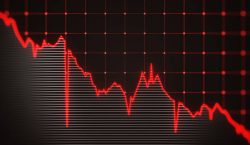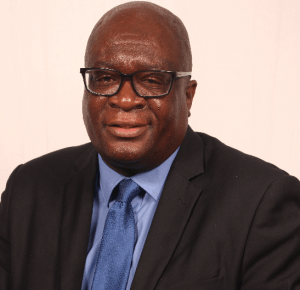

THE Zimbabwe Energy Regulatory Authority (Zera) says low water levels at Kariba Dam have seen the country’s energy mix getting less sustainable with increased reliance on coal.
Hydroelectricity has traditionally been the country’s dominant source, but recent droughts and increased investment in coal — at the Hwange plant — have resulted in “clean” energy playing a smaller role in the country’s energy mix.
“Last year, 52 percent was coming from hydro, mainly Kariba, but it was turned around when Hwange seven and eight units were commissioned; the tables have been turned. We are now having predominantly thermal power into the system,” Zera chief executive Edington Mazambani told The Financial Gazette recently.

Zera chief executive officer, Edington Mazambani
“We have had to reduce the generation capacity to ensure that we utilise the allocated water for the year 2023. I think now we should be at 63 percent thermal with the balance coming from hydro.” This also comes as leading retail group, OK Zimbabwe, has said the government incentivise private sector investment in renewable energy amid the ongoing power outages.
Zimbabwe is currently generating less than two-thirds of its 2 000 megawatts (MW) peak power demand. “The country faces a severe shortage of electricity generation capacity that is likely to hurt operations. “The use of diesel-powered generators for cooking and baking in our stores will increase operational costs.
“We urge the government to provide relief mechanisms on diesel price in the short-term and also provide incentives for private sector investments in renewable energy sources,” board chairman Herbert Nkala said.
Meanwhile, Zera says the participation of pension funds in power generation would as[1]sist the country in meeting its renewable energy targets efficiently and cost-effectively. The National Renewable Energy Policy sees the country’s vast array of clean energy sources including solar, hydro, biomass, geothermal and wind as enough to facilitate a transition from fossil fuels.
The country’s renewable energy policy recommends providing National Project Status to all renewable energy projects and encourages producers to seek Prescribed Asset Status so as to unlock insurance and pension funding.
“Through dialogue, concerted efforts, and engagements, we hope to entice the local financial markets, and in particular, the pension funds to invest in independent power plants (IPPs) and increase renewable energy generation, since they are prescribed assets,” Zera board chairperson David Madzikanda said.
He added that the regulator will continue to review electricity tariffs and petroleum re[1]tail margins to attract investors in the energy and power sector. Last year, IPPs supplied 385,2 GWh in 2022 against 131,1 GWh in 2021, contributing only 4,5 percent of the total energy production. Last December, the government unveiled incentives meant to help bring 1 100MW of new solar projects on stream by 2025, but lack of investment in new energy projects has slowed progress.
Treasury announced the government implementation agreement to expedite the commissioning of 27 solar IPP installations. The projects range from 5 MW arrays to 100 MW solar parks and will cost about $1 billion in total.
IPPs, many of which require foreign cash to fund the development of solar energy plants, have cited the inability to remit dividends and service foreign loans due to foreign currency shortages as key investor concerns.